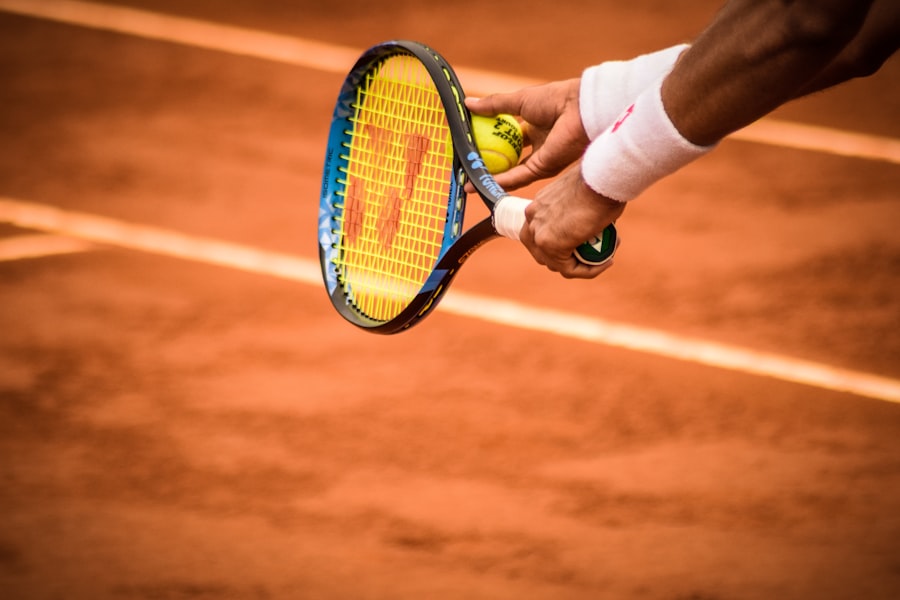Download links
How to install Mastering the Art of Basketball: Tips for Success APK?
1. Tap the downloaded Mastering the Art of Basketball: Tips for Success APK file.
2. Touch install.
3. Follow the steps on the screen.
Description
When we step onto the court, the first skill we often focus on is shooting. It’s the most visible aspect of our game and can often determine the outcome of a match. Perfecting our shooting form is essential, as it lays the foundation for our overall performance.
We must start with the basics: our stance, grip, and follow-through. A balanced stance allows us to maintain stability while shooting, while a proper grip ensures that we have control over the ball. As we practice, we should pay close attention to our elbow alignment and wrist action, as these elements significantly influence our shot accuracy.
As we refine our shooting technique, repetition becomes our best friend. We should dedicate time to shooting drills that focus on different ranges and angles. By incorporating various shooting scenarios, such as catch-and-shoot or off-the-dribble shots, we can simulate game conditions and improve our adaptability.
Additionally, video analysis can be a powerful tool in this process. By recording our shooting sessions, we can identify areas for improvement and track our progress over time. Ultimately, perfecting our shooting form is not just about mechanics; it’s about building confidence in our ability to score when it matters most.
Key Takeaways
- Perfecting your shooting form is essential for accuracy and consistency on the court.
- Enhancing your footwork is crucial for developing agility and speed, giving you an edge over your opponents.
- Improving defensive skills involves understanding and implementing effective defensive strategies to outmaneuver your opponents.
- Enhancing your dribbling techniques is key to mastering ball handling and maintaining control of the ball during the game.
- Strengthening your mindset for success is important for mental toughness, helping you stay focused and resilient in high-pressure situations.
- Building strong relationships on the court through teamwork and communication is essential for a cohesive and successful team dynamic.
Developing Agility and Speed: Enhancing Your Footwork
Effective Drills for Lateral Movement and Explosive Speed
Ladder drills, shuttle runs, and cone drills are excellent exercises that help us develop the lateral movement and explosive speed necessary for effective play.
Focusing on Efficiency and Control
As we work on these drills, we should focus on maintaining low centers of gravity and quick foot placements to maximize our efficiency on the court. Moreover, agility is not just about speed; it’s also about control. We need to practice changing directions swiftly while maintaining balance.
Incorporating plyometric exercises into our training regimen can help us build the explosive power needed for quick cuts and jumps. As we become more agile, we will find ourselves better equipped to navigate through defenses and create scoring opportunities.
Enhancing Footwork for Better Offense and Defense
Ultimately, enhancing our footwork will not only improve our offensive capabilities but also bolster our defensive skills, allowing us to stay in front of our opponents.
Understanding Defensive Strategies: Improving Your Defensive Skills

Defense is often overlooked in favor of flashy offensive plays, but it is equally important in determining the outcome of a game. To improve our defensive skills, we must first understand various defensive strategies and their applications. Man-to-man defense requires us to stay close to our assigned opponent, anticipating their moves while maintaining a strong defensive stance.
On the other hand, zone defense allows us to cover specific areas of the court, which can be particularly effective against teams with strong individual scorers. As we delve deeper into defensive strategies, communication becomes vital. We must learn to communicate effectively with our teammates to ensure that everyone is on the same page.
Calling out screens, switches, and help defense can make a significant difference in our overall defensive performance. Additionally, studying our opponents’ tendencies can provide us with valuable insights into how to counter their offensive strategies. By dedicating time to understanding and practicing these defensive concepts, we can become formidable defenders who contribute significantly to our team’s success.
Source: NBA
Mastering Ball Handling: Enhancing Your Dribbling Techniques
| Metrics | Results |
|---|---|
| Number of Dribbles per Game | 45 |
| Success Rate of Dribbles | 80% |
| Improvement in Dribbling Speed | 15% |
| Time Spent Practicing Dribbling | 2 hours/day |
Ball handling is an essential skill that allows us to control the game and create opportunities for ourselves and our teammates. To enhance our dribbling techniques, we must practice a variety of drills that focus on different aspects of ball handling. Stationary dribbling drills help us develop control and confidence with the ball while moving drills allow us to practice changing speeds and directions effectively.
We should also incorporate both hands into our training to ensure that we are versatile players capable of handling pressure from defenders.
These moves not only make us more unpredictable but also enable us to create space when driving toward the basket.
Additionally, practicing against defenders during scrimmages can simulate real-game situations and help us learn how to protect the ball while navigating through traffic. Ultimately, mastering ball handling will empower us to dictate the pace of the game and make smarter decisions on the court.
Mental Toughness: Strengthening Your Mindset for Success
While physical skills are crucial in basketball, mental toughness is what truly sets successful players apart from the rest. Developing a strong mindset requires us to cultivate resilience and focus under pressure. We must learn to embrace challenges and view setbacks as opportunities for growth rather than obstacles.
Visualization techniques can be particularly effective in this regard; by imagining ourselves succeeding in high-pressure situations, we can build confidence and reduce anxiety when it matters most. Moreover, maintaining a positive attitude is essential for mental toughness. We should practice self-talk that reinforces our belief in our abilities and encourages us to push through difficult moments during games or practices.
Setting specific goals for ourselves can also provide motivation and a sense of purpose as we work toward improvement. By fostering mental toughness within ourselves and supporting each other as teammates, we can create an environment where everyone thrives under pressure and performs at their best.
Teamwork and Communication: Building Strong Relationships on the Court

Basketball is inherently a team sport, and effective teamwork is vital for achieving success on the court. Building strong relationships with our teammates requires open communication and trust. We must learn to express ourselves clearly during practices and games, whether it’s calling for the ball or providing constructive feedback.
Establishing a culture of communication fosters collaboration and ensures that everyone feels valued within the team dynamic.
By taking the time to learn how each teammate operates on the court, we can develop chemistry that translates into seamless plays during games.
Participating in team-building activities off the court can also strengthen our bonds and enhance our ability to work together effectively during high-pressure situations. Ultimately, by prioritizing teamwork and communication, we create an environment where everyone feels empowered to contribute their best efforts toward achieving shared goals. In conclusion, mastering basketball requires a multifaceted approach that encompasses various skills and mental attributes.
By focusing on perfecting our shooting form, enhancing agility and speed through footwork drills, understanding defensive strategies, mastering ball handling techniques, cultivating mental toughness, and fostering teamwork through effective communication, we position ourselves for success both individually and collectively as a team. As we continue to develop these skills, we not only improve as players but also deepen our love for the game itself.
If you’re a fan of basketball, you may also enjoy reading about the intense competition in the world of Guitar Band Rock Battle. Check out this article to learn more about how musicians battle it out on stage.
FAQs
What is basketball?
Basketball is a team sport in which two teams, typically consisting of five players each, compete to score points by shooting a ball through the opposing team’s hoop.
What are the basic rules of basketball?
The basic rules of basketball include dribbling the ball while moving, passing to teammates, and shooting the ball into the opposing team’s hoop to score points. Players must also defend their own hoop and try to prevent the opposing team from scoring.
What equipment is used in basketball?
The main equipment used in basketball includes a ball, hoop, and court. Players also wear specialized basketball shoes and may use protective gear such as knee pads and ankle braces.
How is basketball played?
Basketball is played on a rectangular court with a hoop at each end. The game is divided into quarters, and the team with the most points at the end of the game wins. Players move the ball by dribbling, passing, and shooting, while also playing defense to prevent the opposing team from scoring.
What are the health benefits of playing basketball?
Playing basketball can provide numerous health benefits, including improved cardiovascular fitness, strength and endurance, coordination, and agility. It also promotes teamwork and social interaction.
What are the different positions in basketball?
The main positions in basketball are point guard, shooting guard, small forward, power forward, and center. Each position has specific roles and responsibilities on the court, such as ball-handling, scoring, rebounding, and defending.





